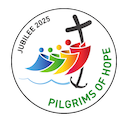Geography Curriculum Map Cycle A
Geography Curriculum Map Cycle B
Geography Narrative
Geography progression from EYFS to year 1
The Geography curriculum aims to inspire students with curiosity and fascination about the world around them. Our curriculum aims to equip students with knowledge and give them an understanding about natural and human environments, diverse places, people and resources, including the Earth’s key physical and human processes. The study of geography should give students an understanding of their place in World. In response to our mixed aged classes, our Geography Curriculum is implemented on a two yearly programme (Cycle A and Cycle B). This ensures complete curriculum coverage for our pupils. As children progress throughout the school, they develop their geographical knowledge, key concepts and understanding through a range of topics. By Year 6, all children will have followed our Curriculum Narrative pathway.
The Threshold Concepts
Within geography, there are 4 key threshold concepts, which when combined, ensure that our students can access a deep understanding of the subject. The threshold concepts relate to core aspects of disciplinary knowledge and substantive knowledge. For example, when ‘thinking like a geographer’, students need a deep understanding of place, knowledge and geographical skill to enable their understanding of physical and human geography. As students progress through the curriculum narratives, so should their understanding of the threshold concepts:
1) Location and Place Knowledge
Location and place knowledge is not simply about knowing where a place is in the world. It includes:
- Location Knowledge: world countries, regions, environments, continents, physical features (rivers and mountains).
- Physical Knowledge: similarities and differences between places (physical and human), cultures, cities, capitals.
- Map Literacy: latitude, longitude, equator, northern hemisphere, southern hemisphere, the Tropics of Cancer and Capricorn, Arctic and Antarctic Circle, the Prime/Greenwich Meridian and time zones.
2) Geographical Techniques
The use of geographical techniques such as fieldwork, but also the use of terminology and geographer traits, such as:
- Map literacy, Ordinance Survey maps, grid references, latitude and longitude, atlases, globes, GIS (Google maps),
aerial photos. - Numeracy and graphicacy, manipulating data, interpreting graphs and tables, constructing graphs. Literacy skills using key terminology, constructing and writing arguments, writing persuasively.
- Annotating diagrams/photos, using case studies, causes, effects, responses, processes leading to landforms, inferring information and making judgements.
3) Physical Features and Processes
Looking at the natural landscapes, features and the processes which create them. This is done in two stages:
- Characteristics (describe) What does the feature look like? What makes it unique? What are its dimensions?
Observations (figures, photos, diagrams). - Processes (explain) Why does the feature/event occur? Step-by-step formation, directly link how the processes create the characteristics.
4) Human Interaction with the Environment
Humans interact in a number of ways including:
- Land use, types of settlement, economic activity including trade links, distribution of natural resources.
- Human impacts on the natural environment, human induced hazards, impacts of natural hazards on people.
- Human responses to natural hazards and to human induced hazards.
In EYFS students will begin to develop their understanding of the world around them. They will know where they are placed and will begin to recognise that there are other places around them through studying Magnificent Me and Up, Up and Away. During the course of these units, they will become familiar with the location of their home and school; learn about the name of the street they live on as well as the name of their local town or city. They will be introduced to geographical techniques such as map literacy by creating maps of their immediate environment, making links to literacy through labelling. They will begin to differentiate between physical features and human features.
As they move into Key Stage 1, students gain a greater understanding of the world around them, studying their local area in greater detail, the weather, Planet Earth and Africa. Their locational and place knowledge will deepen as they begin to look more closely at their immediate environment but also Planet Earth as a whole. They will identify many types of housing and weather patterns as well as be able to name the countries within the UK, the seven continents and five oceans. They will begin to understand why different locations have different climates and will be able to compare and contrast opposing environments, using geographical vocabulary. Students will become more aware of how humans interact with the environment in different parts of the earth. They will study different types of map and will broaden their own understanding of maps and graphicacy by creating more detailed maps using symbols and keys.
In Lower Key Stage 2, students study the UK in more detail, they learn specific locational facts such as capital city names, landmarks and flags. They also begin to develop an understanding of human geography by studying population and distribution. They look at physical features of the UK by contrasting rural and urban areas and gain an understanding of migration and tourism. Students are provided with many opportunities to develop a greater understanding of the physical processes that take place on earth by delving into the natural world and its resources, they will understand how volcanoes form, how and why earthquakes occur and will study rivers and coasts – completing case studies as they go.
As they progress to Upper Key Stage 2, students continue explore the human world, enabling them to see links to their physical geography. They will study settlements and land use, natural resources and their use, biomes and North America. They will continue to deepen their geographical skills and knowledge through studying many different types of maps and graphs. They will understand the difference between labelling and annotating and will be able to analyse different types of data using these geographical techniques. They will complete extended pieces of writing demonstrating their understanding, using subject specific vocabulary. This curriculum prepares them with high quality skills and knowledge needed for Key Stage 3 and beyond.

